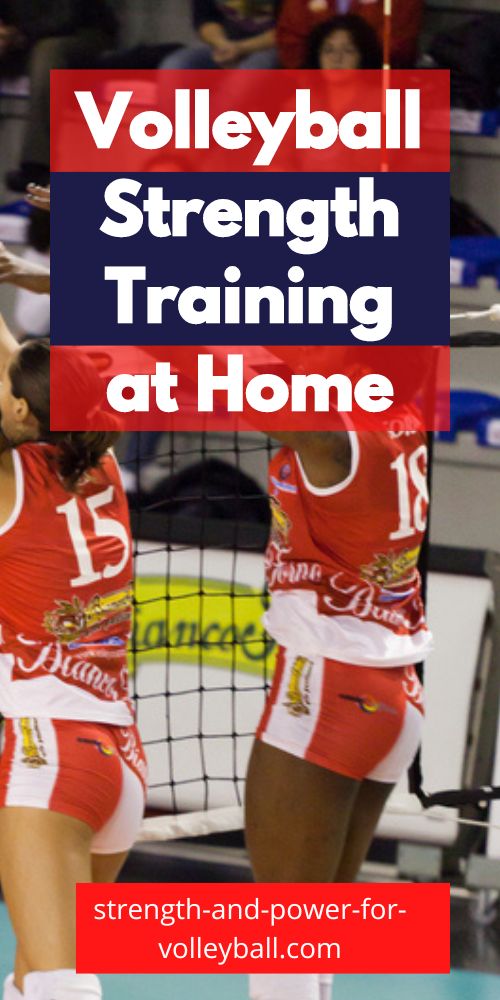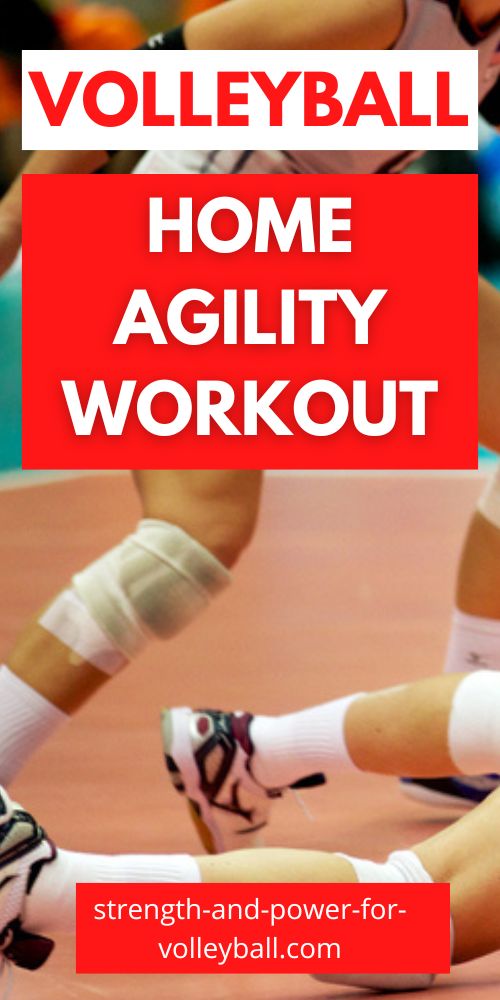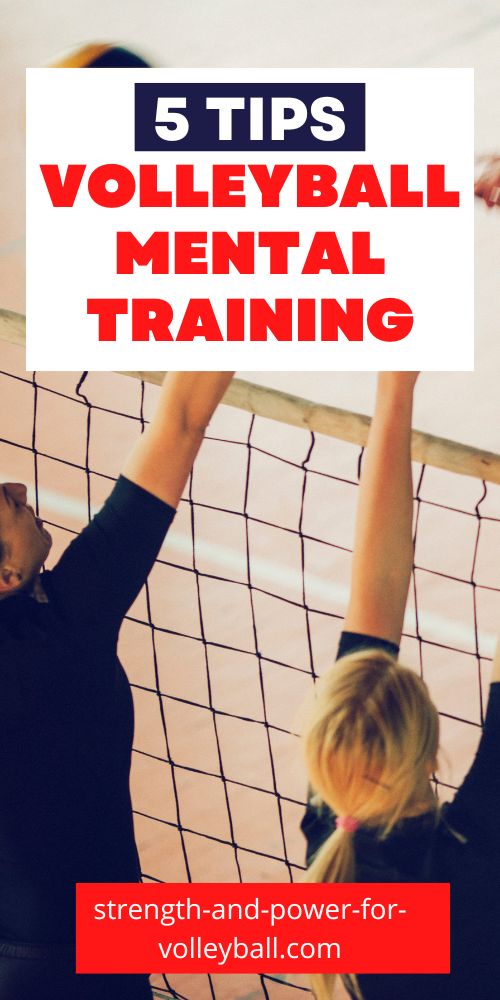Volleyball Workouts at Home
Volleyball workouts at home will help you continue to improve at volleyball while you're away from the court.
Before we get to the workouts, you should know three critical reasons you should exercise on your own at home.
See this as an opportunity to get an edge over your competition.
Improving Performance: Regular exercise can help improve a player's overall physical fitness, translating into improved court performance. Players can enhance their skills, agility, and coordination by engaging in exercises that specifically target the muscles and movements required for volleyball, such as strength, speed, and agility.
Injury Prevention: Volleyball players are prone to certain types of injuries, such as ankle sprains, knee injuries, and shoulder injuries. By incorporating injury prevention exercises into their workouts, players can strengthen the muscles around these vulnerable areas and reduce their risk of injury.
Flexibility and Mobility: Flexibility and mobility are essential for volleyball players, as they require a wide range of motion and agility on the court. By incorporating stretching and mobility exercises into their workouts, players can improve their range of motion, reduce muscle soreness and stiffness, and improve their overall athletic performance.
In addition to these benefits, exercising on their own at home can also help volleyball players maintain their fitness and skills during times when they may not have access to team practices or competitions, such as during the off-season or during a pandemic.
Here are 3 volleyball workouts at home that will take your volleyball game to the next level.
Strength Training - Volleyball Workouts at Home
Building strength should be a part of a volleyball player's workout routine. It helps improve power, explosiveness, and stability, which are crucial for court success. Here is a strength workout that a volleyball player can do on their own at home:
Squats: Stand with feet hip-width apart, with toes slightly turned out. Lower your body by bending at the knees and pushing your hips back. Keep your chest up and your weight on your heels. Return to the starting position by pushing through your heels. Repeat for 3 sets of 10 reps.
Lunges: Stand with your feet shoulder-width apart. Take a step forward with your right foot, lowering your body until your right thigh is parallel to the ground. Push through your right heel to return to the starting position. Repeat with your left leg. Do 3 sets of 10 reps on each leg.
Push-ups: Get into a plank position with your hands slightly wider than shoulder-width apart. Lower your body until your chest nearly touches the ground. Push back up to the starting position. Repeat for 3 sets of 10 reps.
Dumbbell rows: Stand with your feet shoulder-width apart, holding a dumbbell in your right hand. Lean forward, keeping your back straight, and place your left hand on a bench or chair for support. Pull the dumbbell up towards your chest, squeezing your shoulder blade. Lower the dumbbell back down. Repeat for 3 sets of 10 reps on each arm.
Plank: Get into a push-up position, but instead of lowering yourself to the ground, hold the position with your arms extended. Keep your body in a straight line, with your core tight and your glutes engaged. Hold for 30-60 seconds, rest, and repeat for 3 sets.
Remember to warm up before starting your strength workout with some dynamic stretches. And always listen to your body and adjust the training as necessary.
Speed and Agility Training at Home
Speed and agility training are essential for volleyball players as it helps improve their ability to move quickly and change direction on the court. Here's a speed and agility workout that a volleyball player can do on their own at home.
Ladder drills: Lay out an agility ladder (use cones if a ladder isn't available) on the ground and perform various exercises. Start with a basic two-foot run through the ladder, then progress to more challenging drills such as side shuffles, high knees, and quick feet. Do each drill for 30 seconds, rest for 30 seconds, and repeat for 3 sets.
Cone drills: Set up a series of cones in a zigzag pattern, and run through them as quickly as possible, touching each cone as you go. Start with a basic forward weave, then progress to more challenging drills such as lateral shuffles, crossover steps, and sprint stops. Do each drill for 30 seconds, rest for 30 seconds, and repeat for 3 sets.
Box jumps: Stand in front of a sturdy box or bench, and jump onto it from a standing position, landing softly on the top. Step down and repeat for 10 reps. Rest for 30 seconds and repeat for 3 sets.
Shuttle runs: Set up two cones 10-15 yards apart. Run from one cone to the other, touch the ground, and run back to the starting cone. Repeat for 30 seconds, rest for 30 seconds, and repeat for 3 sets.
Single-leg hops: Stand on one leg and hop forward as far as possible, landing on the same leg. Do 10 reps on each leg, rest for 30 seconds, and repeat for 3 sets.
Remember to warm up before starting your speed and agility workout with some dynamic stretches. And always listen to your body and adjust the workout as necessary.
Mental Workout at Home
Mental preparation is a crucial part of an athlete's training; you can do it from the comfort of your home. Here are a few mental workouts an athlete can do on their own at home:
Visualization: Spend 10-15 minutes each day visualizing yourself performing at your best during competition. Imagine yourself making the perfect pass, hitting the perfect shot, or executing the perfect play. Try to make the visualization as vivid and detailed as possible, using all of your senses.
Goal setting: Set specific, measurable, and achievable goals for yourself, both short-term and long-term. Write down the goals and keep them in a visible place to remind yourself of what you're working towards. Review your progress regularly and make adjustments as necessary.
Positive self-talk: Watch carefully how you talk to yourself, and make a conscious effort to replace negative thoughts with positive ones. Encourage and motivate yourself, rather than criticizing or doubting yourself. Repeat positive affirmations to yourself, such as "I am strong," "I am capable," and "I can do this."
Breathing exercises: Practice deep breathing exercises to help calm your mind and reduce stress. Sit comfortably with your eyes closed while closely aware of your breath, inhaling deeply through your nose and exhaling slowly through your mouth. Repeat for a few minutes, or until you feel calm and centered.
Meditation: Set some time aside each day to meditate, at least for a few minutes. Sit quietly and focus on your breath, letting go of any thoughts or distractions that come up. Meditating can help improve focus, reduce stress and anxiety, and improve overall mental well-being.
Remember, mental preparation is just as necessary as a physical practice to achieve success in sports. Incorporating mental workouts into your routine can help you stay focused, motivated, and confident on and off the court.
If you enjoyed these volleyball workouts at home and would like to keep it close to you at any time, just save this pin to your Pinterest Volleyball Training Board.
- Home
- workout for volleyball
- Volleyball Workouts At Home


